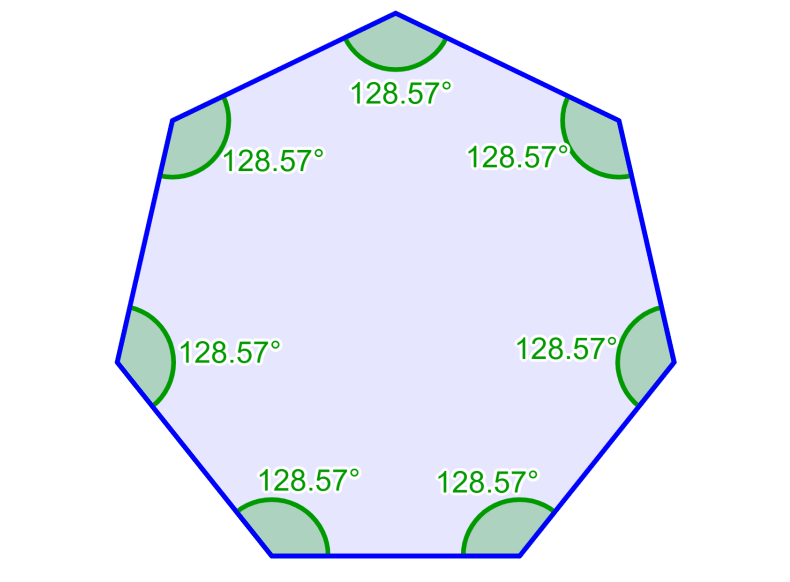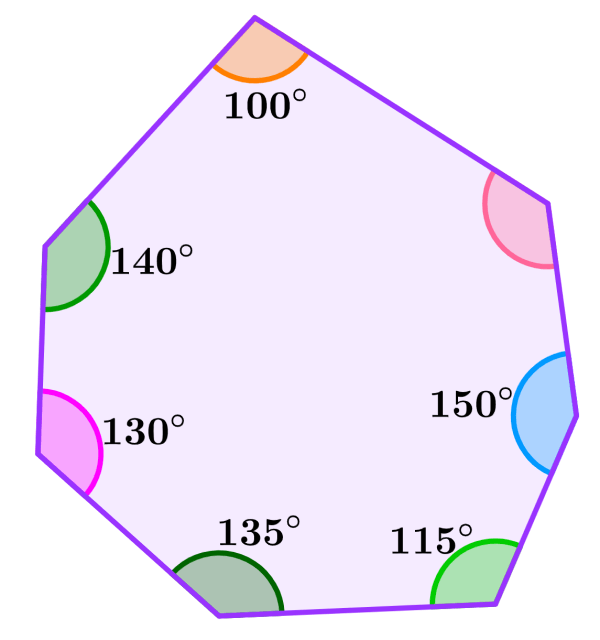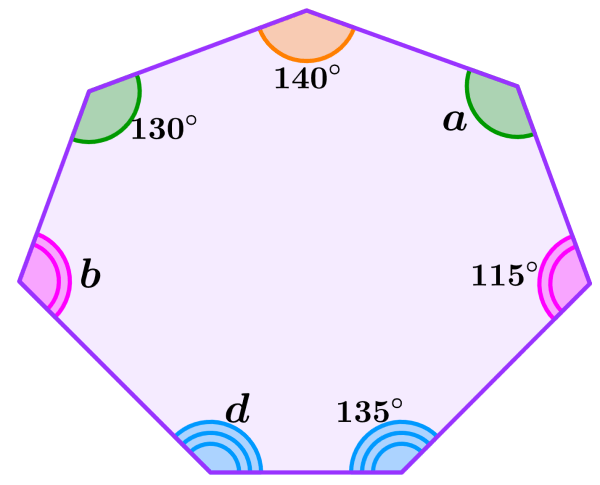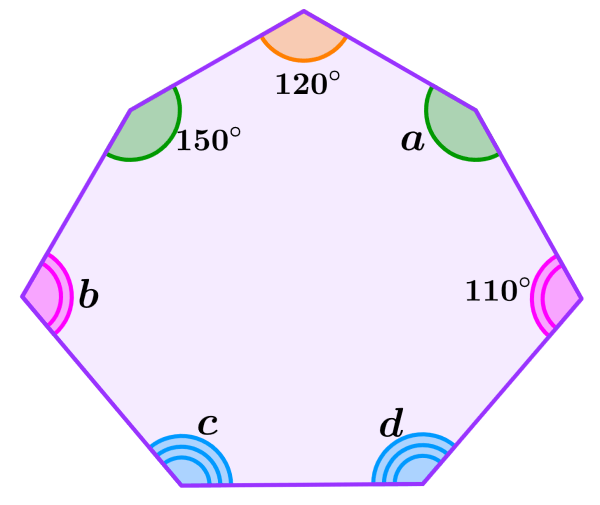Heptagons have a sum of interior angles equal to 900°. In a regular heptagon, all the sides have the same length, so the interior angles also have the same measure. Therefore, each interior angle of a heptagon measures 120°. However, an irregular hexagon has different interior angles, but they always have a total sum equal to 900°.
Here, we learn more details about the interior angles of heptagons. We will learn about its formula and solve some problems.
Interior angles in a regular heptagon
Regular heptagons are characterized by having sides with the same length, that is, all the sides of a regular heptagon are congruent. Furthermore, regular heptagons also have interior angles with the same measure.
When we add all the interior angles of any heptagon, we always get 900°. Therefore, to determine the measure of an internal angle of a regular heptagon, we divide 900° by 7 and we have:
900° ÷ 7≈128.571°
Each internal angle in a regular heptagon measures 128.571°.
The diagram below is an example of a regular hexagon, which has sides of the same length and angles of the same measure. When we add the seven 128.571° angles, we get a total of 900°.

Formula to find the interior angles of a heptagon
The sum of the interior angles of any polygon can be found using the following formula:
| $latex (n-2) \times 180$° |
In this formula, n represents the number of sides of the polygon. In this case, we use $latex n = 7$ for a heptagon. Substituting this value, we have $latex (5) \times 180 = 900$°. This shows that the sum of the interior angles of a heptagon is equal to 900°.
How to find a missing angle in a heptagon?
We know that a regular heptagon has all its interior angles equal with a measure of 128.571°. However, in the case of a missing angle of an irregular heptagon, we can determine it by adding all the known angle measures and subtracting the obtained value from 900°.
For example, the following is an irregular heptagon with the angles 100°, 140°, 130°, 135°, 115°, 150°.

To find the measure of the missing angle, we start by adding all the known angles:
100°, 140°, 130°, 135°, 115°, 150° = 760°
Now, we subtract the obtained value from 900°:
900°-760° = 140°
Therefore, the missing angle of the heptagon has a measure of 140°.
Now let’s look at an example where we have to find more than one missing angle. In this heptagon, the angles represented in the same way are equal. For example, angles that have a double line have the same measure.

Since the angles that have a line and are green are equal, we have a=130°.
Angles b and 115° are also the same since they are both represented with a double line and share the same color. Therefore, we have b=115°.
Finally, we know that the angle d is equal to 135° since these angles share the same color and have a triple line.
Solved examples of interior angles of a heptagon
EXAMPLE 1
Find the measure of the missing angle of the heptagon.

Solution: We have the measures of the angles 110°, 150°, 120°, 125°, 155°, and 120°. Therefore, we add these angles:
110°+150°+120°+125°+155°+120° = 780°
Now, we find the missing angle by subtracting the obtained value from 900°:
900°-780° = 120°
The missing angle measures 120°.
EXAMPLE 2
Determine the measures of the missing angles in the heptagon below.

Solution: The angles represented by the two lines are equal. Therefore, we have a=150°.
Similarly, the angles b and 110° are also equal since both are represented with a double line. Therefore, we have b=110°. Finally, we can find the measure of the angles c and d by adding the known angles:
120°+150°+150°+110°+110° = 640°
Now, we subtract the obtained value from 900° and we have:
900°-640° = 260°
This is equal to the sum of the two missing angles. Since both angles are equal, we divide the result by 2 to get the value of each angle. Therefore, we have c=130° and d=130°.
See also
Interested in learning more about the interior angles of a polygon? Take a look at these pages:



